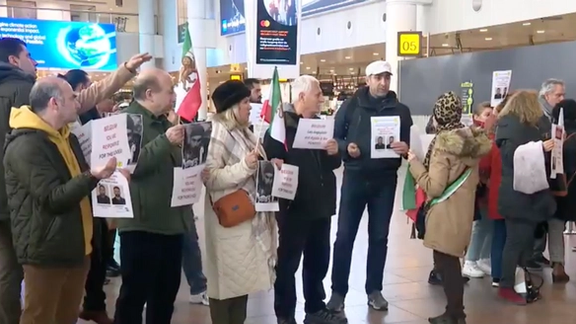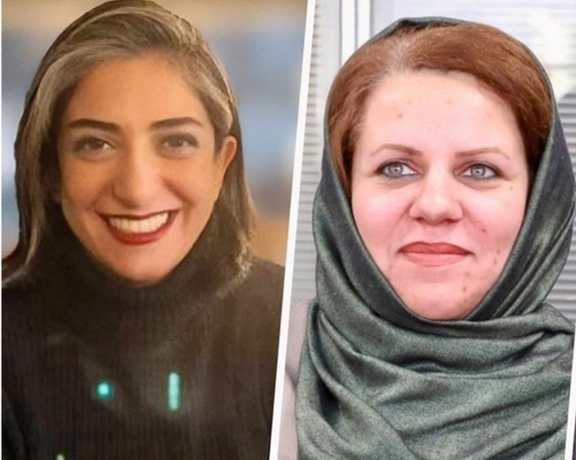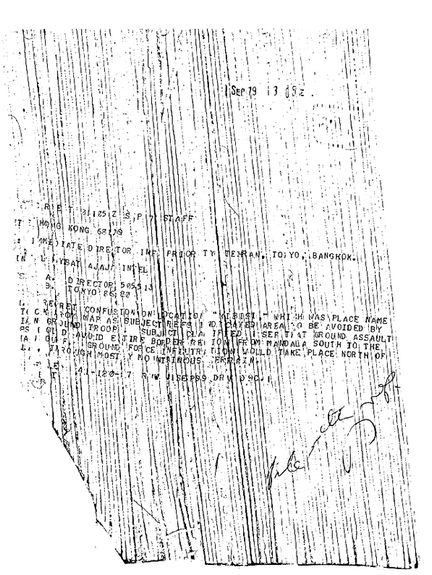People Gather In Brussels Airport To Stop Deportation Of Two Iranian Asylum Seekers

A group of people have held a gathering in Zaventem airport in Brussels on Monday to stop the expulsion of two Iranian refugees by the Belgian government.

A group of people have held a gathering in Zaventem airport in Brussels on Monday to stop the expulsion of two Iranian refugees by the Belgian government.

Iran’s government pumped $305 million into the currency market over two days, after the currency, rial, fell to a historic low of 450,000 against the US dollar.
The Central Bank of Iran announced that the dollars were made available on Saturday and Sunday at a special currency scheme known as NIMA, which is set up for foreign currencies to be sold at a lower rate by exporters and for importers to buy what they need at the same low rate to finance their purchases from other countries.
The system was set up to make imports cheaper and control rising prices, after US sanctions in 2018 practically devalued Iran’s currency and led to very high inflation. The rial has lost value 12-fold in five years.
The injection of $305 million into the NIMA system indicates that there are not enough dollars from exports and the government had to satisfy demand.
However, the US dollar is set at 285,000 to the dollar in the special government scheme versus the free market where it is traded at about 450,000. The discrepancy between the two breeds corruption, as well-connected individuals and companies can buy cheap dollars through NIMA and instead of using it to finance imports, sell it on the currency market.
Numerous cases of such corruption have been revealed since 2018, when cheap dollars obtained from the government to import essential goods were used to import thousands of luxury cars, or simply nothing.
The government also regularly sells dollar through the free market to currency dealers to support the beleaguered rial. Usually, these interventions have a limited and temporary effect.

With the arrest of two more journalists in Iran the number of media activists arrested since the beginning of nationwide protests reached 69.
News outlets have identified the two female journalists as Saeedeh Shafiei and Mehrnoosh Zarei.
Hassan Homayoun, the husband of Saeedeh Shafiei said in a tweet Sunday that the writer and civil activist was arrested by the security forces at their home.
The US-based Human Rights Activists News Agency (HRANA) also reported that Shafiei was transferred to an unknown place and there is no information about the reasons for her arrest.
HRANA further reported that another journalist identified as Mehrnoosh Zarei has been detained and transferred to the notorious Evin prison in the capital Tehran.
“The security forces searched Zarei's house without introducing their institutional affiliation and after confiscating some of her digital equipment, they took her to the prison,” wrote HRANA.
Zarei has a history of cooperation with ILNA, ISKA, Chelcheragh and Anna news agencies.
According to a report by a committee that follows up on the situation of the detainees, 69 journalists have been arrested during the protests following the death of Mahsa Amini in police custody in mid-September with some of them freed on bail.
The report says several journalists have been sentenced to imprisonment and banned from leaving the country.
The arrest of media activists and issuing heavy sentences for them comes as the judiciary previously claimed that "no journalist is in prison because of his/her job."

Father of a detained Iranian protester says his daughter's lawyers have resigned because the Judiciary has refused to allow them “a face-to-face meeting with the defendant”.
Armita Abbasi’s father says attorneys Mohammad Esmailbeigi and Sonia Mohammadi have resigned because they were not able to defend her daughter properly.
Esmailbeigi, who could get the court’s approval for representing Armita, was not granted permission to meet with his client after four days, which forced him announce his resignation on Twitter.
Armita's mother also wrote on Twitter that the lawyer's explanation makes sense because he does not have the opportunity to defend Armita.
Some other lawyers have reported that their letters of attorney were not accepted in similar cases by the courts of the Islamic Republic.
Most detained protesters and dissidents are not allowed to have their own lawyers and their trials are held in a quick manner behind closed doors.
Armita Abbasi, 21, was arrested in late September during the protests following the death of Mahsa Amini in hijab police custody. According to leaked reports, she was gang-raped many times after being arrested, for which she was taken to hospital. Security forces quickly kidnapped her from the hospital and took her back to prison.
After Armita Abbasi’s arrest, her family went to the hospital in Karaj, but the agents took her out of before they arrived.
Alborz province judiciary said on November 8 that "the news published about the death or rape of Armita Abbasi is baseless and not true."
The trial of Armita Abbasi is scheduled to be held on January 29.

Thirty female political detainees in Iran’s notorious Evin prison in Tehran, have signed an open letter demanding an end to the "unjust sentences for prisoners" and their execution.
“We, the political and ideological prisoners in the women’s ward of Evin Prison, demand an end to the execution of protesters and an end to unjust sentences of prisoners in Iran,” they say in the petition.
The women inmates including French-Iranian academic Fariba Adelkhah, the daughter of a former president Faezeh Hashemi and political activist Sepideh Qolian say their group of 30 prisoners have been “sentenced to a total of 124 years in prison through unfair and non-transparent procedures.”
Despite coming from different religious and political backgrounds, “we have come together to say ‘no’ to execution. We defend people’s right to live in justice,” reads the petition.
The letter is published in a situation that according to the Norway-based Iran Human Rights Organization at least 109 protesters arrested since mid-September are at risk of imminent execution or death sentence.
This is apart from the four protestors that the Islamic Republic has already executed on charges of "corruption on earth and war against God," without access to a lawyer and a fair trial.
In more than four months, over 500 citizens have been killed by government agents, dozens of whom were children. In the meantime, about 20,000 protesters have also been arrested.

Islamic Republic’s education minister says parts of the documents obtained during the US embassy takeover in 1979 will be included in school textbooks as of next year.
Islamic Republic’s education minister says parts of the documents obtained during the US embassy takeover in 1979 will be included in school textbooks as of next year.
Yousef Nouri said Sunday that the move was done upon a call by Supreme Leader Ali Khamenei and the materials will be included in textbooks in all levels from the elementary school to the end of high school according to the level of understanding of the students.
He said that Khamenei urged the measure in a meeting with a group of students on November 2, 2022. Schoolbooks in Iran carry a heavy load of the regime ideology, with history re-written to fit its narrative, similar to what Communist regimes did in the 20th century.

According to Fars news agency, affiliated with the Revolutionary Guards, after the occupation of the US embassy in Tehran by revolutionary students, they “found documents there that showed American conspiracies against the Iranian nation," adding that the data extracted from the documents are compiled in 70 to 80 volumes of books.
According to an article published by The Washington Post in January 1982, hundreds of highly sensitive documents were captured and reconstructed after the embassy takeover. There were other documents that reportedly have not been deciphered or have been withheld from public consumption. “Although those published do not support the more egregious conspiracy theories of the militants, they have been used in an intensive campaign to arouse further distrust of the United States.”

The published documents, most of which have been authenticated by US sources, detail the US estimates of the regime of the late shah, Mohammad Reza Pahlavi, the forces which toppled him and the struggle to preserve American influence in Iran.
An article by the New York Times on July 10, 1986, said the documents were published under the title “Documents From the Espionage Den," the name the Islamic Republic uses for the US embassy. The books are sold openly in Tehran bookshops and included photocopies of the original telexes, mailgrams and typed letters from the embassy, classified reports, commentaries from the "students," and their complete translations into Persian.
Among the papers were shredded secret documents pieced back together by the attackers that detailed attempts of the Central Intelligence Agency to recruit high-level Iranian officials, ayatollahs, foreign journalists and diplomats as well as other CIA contacts either as paid or "unwitting” agents in the months after the revolution. “The documents shed light on the CIA's apparently unsuccessful attempt to recruit the former Iranian President Abolhassan Bani-Sadr, in the months just before the embassy takeover, when he was a member of the ruling Revolutionary Council and head of the Central Bank," said the article.
Some of the documents suggested that some of the members of the embassy's staff had been working with the CIA. Later, the CIA confirmed its role and that of MI6 in Operation Ajax -- the 1953 Iranian coup d'état that overthrew Prime Minister Mohammad Mosaddegh in favor of strengthening the monarchical rule of the Shah, Mohammad Reza Pahlavi.
The regime is expected to embed a heavy dose of its anti-American propaganda in the textbooks claiming it is substantiated by the embassy documents.
Earlier in the month, the Islamic Republic announced its intention to change the content of textbooks in foreign language schools after criticism by Khamenei. Head of Non-Governmental Schools and Centers Ahmad Mahmoudzadeh told ILNA Sunday that “We will have a call to produce content of language books for schools, which will be implemented in line with the order of the Supreme Leader.” "Language books that have nothing to do with our culture will be discarded," he added. Changing the content of textbooks based on the government's propaganda policies has been implemented in the last few years upon the order of Supreme Leader Ali Khamenei. However, this is the first time that these changes will be applied to the language teaching books of private institutes.
In August, the education minister said that 200 schoolbooks of the country’s education system will be revised as ordered by the Supreme Leader.
The demonstrators held the gathering to prevent Mohammadreza Hamian and Alireza Hesam, both 22, to be sent home after their asylum application was rejected in December despite their attempts to gather as many documents as possible.
The men had arrived in Belgium after taking part in anti-government protests against the clerical rulers in Iran. However, they now fear for their lives.
“We have been in a closed reception center for 80 days, and no one hears our voice,” one of them told RTBF, the Belgian Radio-television of the French Community.
"The whole world knows what is happening in Iran for a few months. We were in the streets asking for freedom. The whole world knows what we risk if we go back to Iran ," they told RTBF from the center.
“Returning to Iran equals death, like what happened to many other young people like us in Iran ,” they say.
A Monday flight will take them to Turkey, and then they might be sent back to Iran.
Ali Amerian, the lawyer of these two asylum seekers, and Darya Safaei, an Iranian member of the Belgian Parliament, have asked the government to stop their deportation.
Nicole de Moor, the Secretary of State for Asylum and Migration said “asylum is really reserved for those who fear individual persecution, which was not the case for these two people, according to the independent analysis of our asylum authorities.”